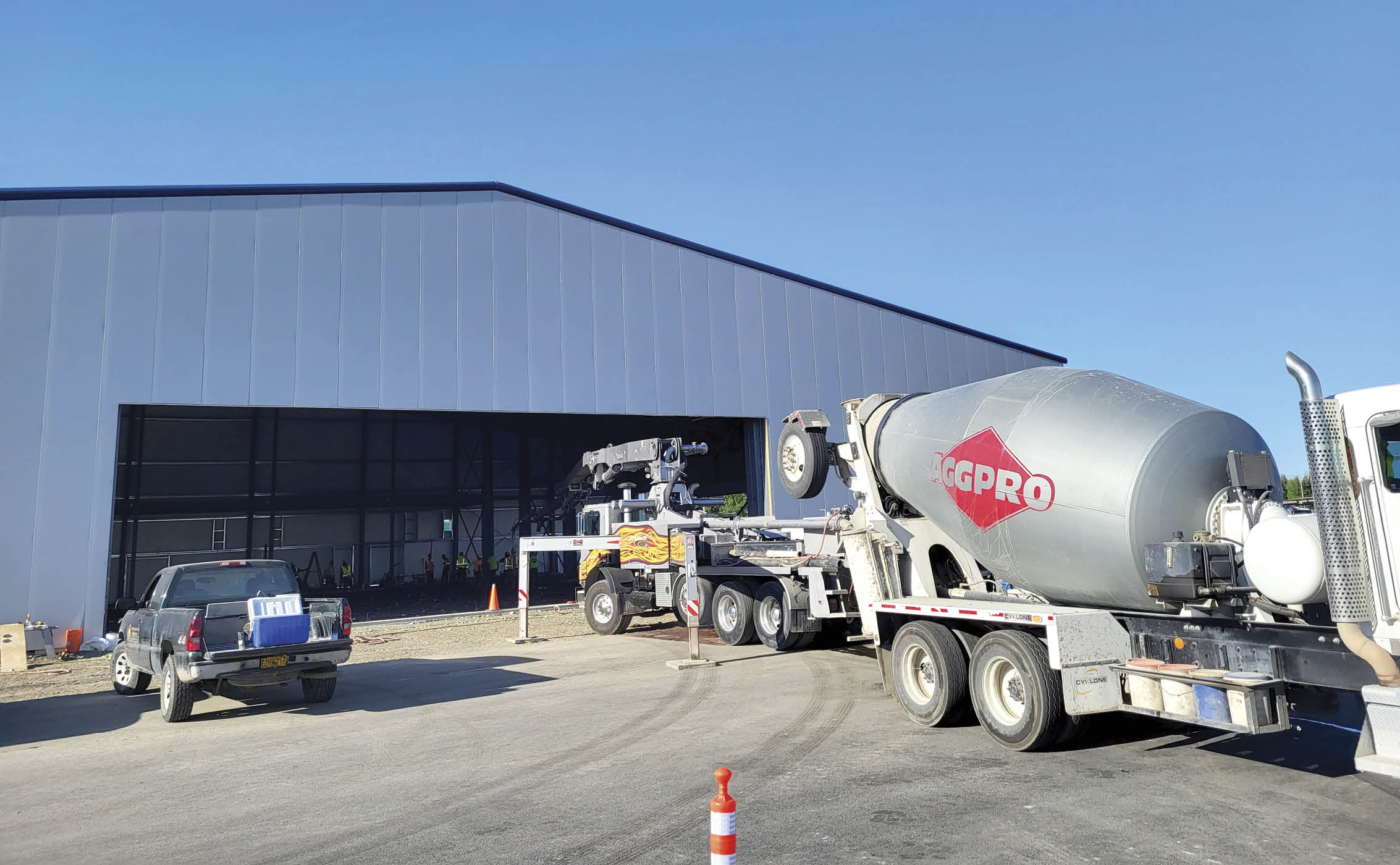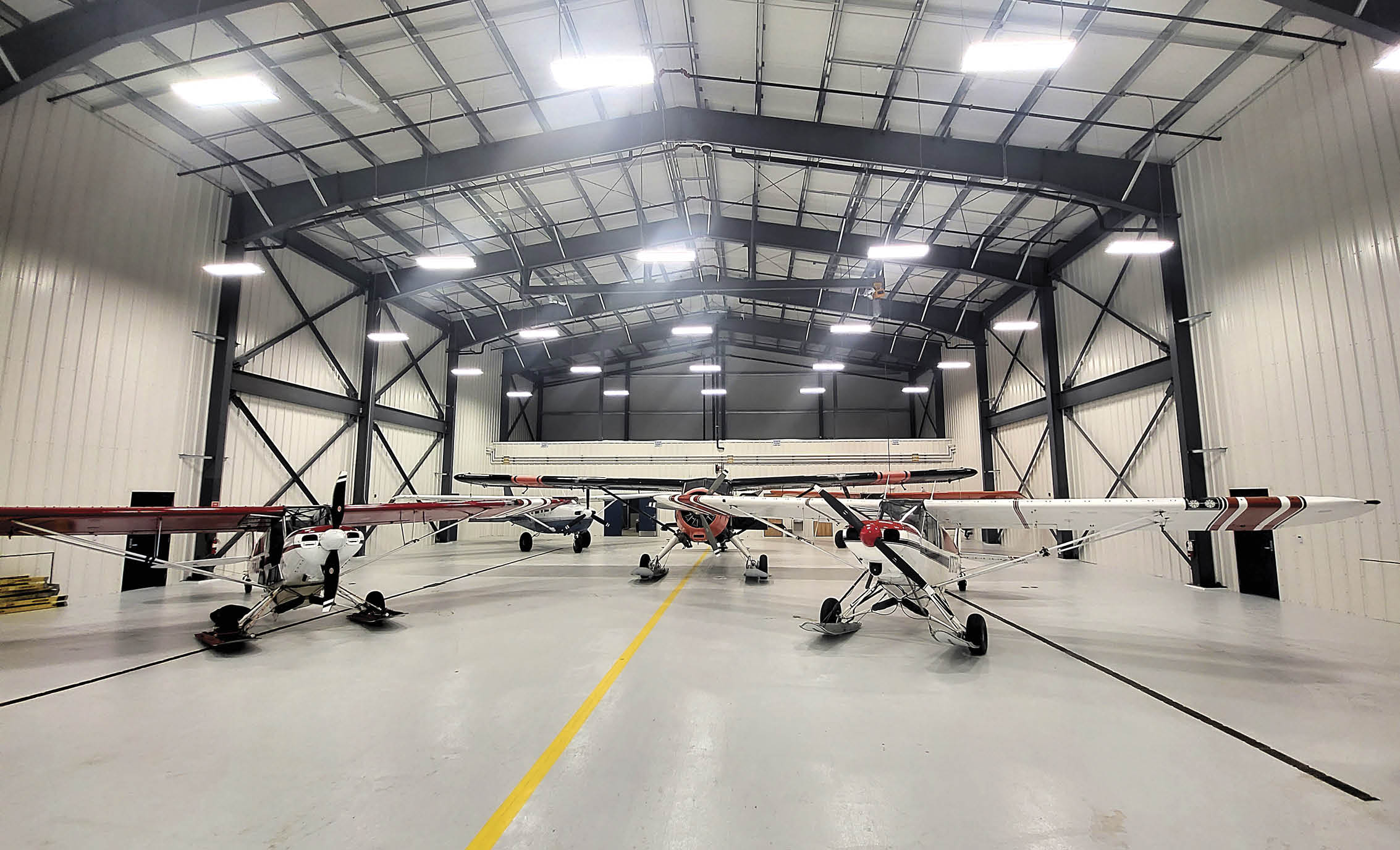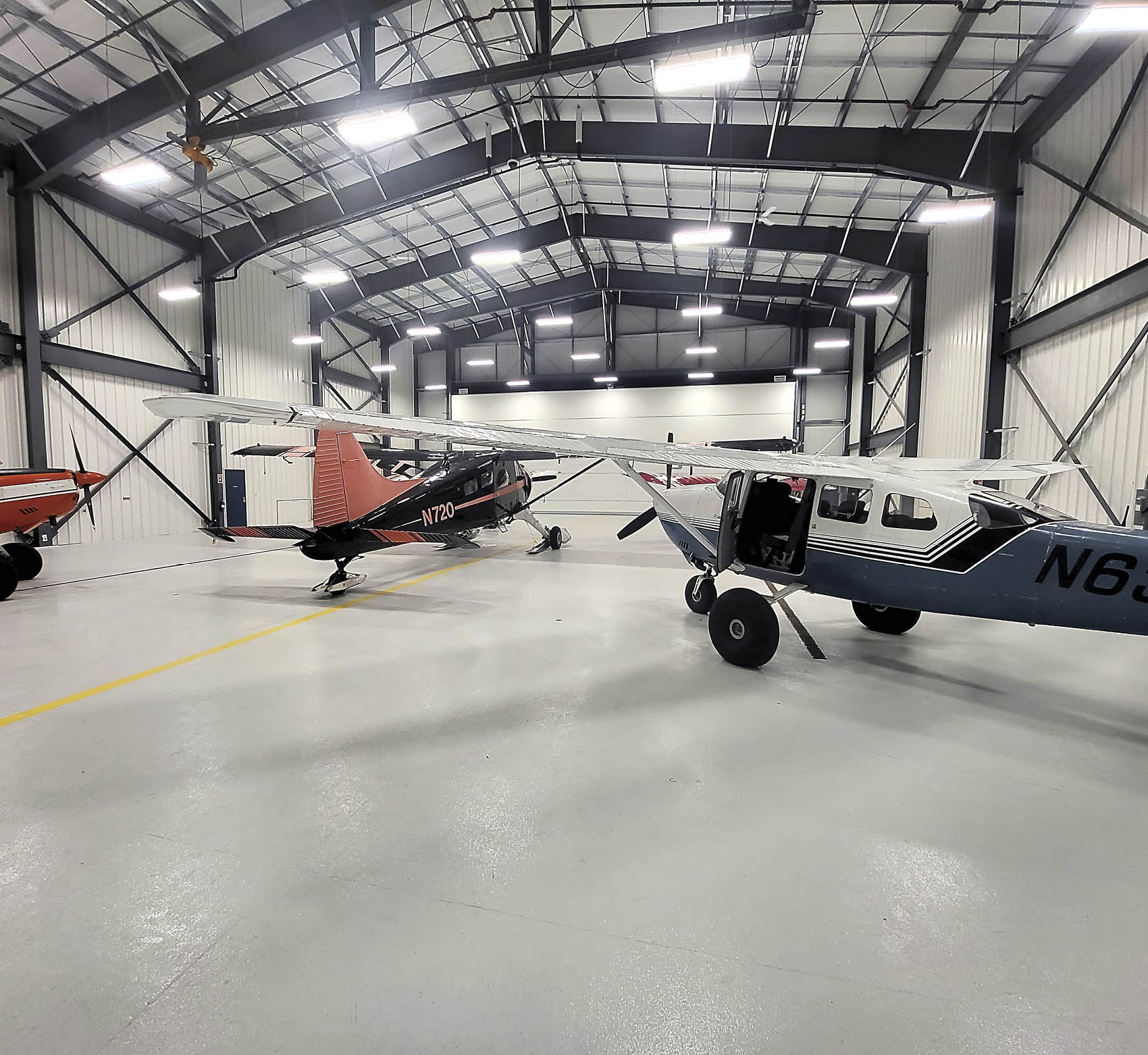
Update


long the shore of Lake Hood Seaplane Base in Anchorage, a new hangar operated by the Department of Interior’s Office of Aviation Services, or OAS, not only replaces a historic, outdated, and damaged hangar but also represents a new era in Alaska aviation.
Substantially completed in November of 2022, the OAS hangar means three Department of Interior agencies—US Fish and Wildlife Service, the National Park Service, and the Bureau of Land Management—are once again fully operational.
It took three years to fully complete the multi-phase project, which included historic preservation, demolition, contamination remediation, an unexpected redesign, supply chain issues, and winter construction.
Despite these challenges, Amy Klein, project manager for US Fish and Wildlife Service’s OAS, says team collaboration helped get the job done right.
“I felt like this project exemplified ‘design-build done right,’ with cooperation between everyone from facility staff to stakeholders and owners to the design and construction contractors and subcontractors,” Klein says.
The agencies needed an updated place to store and maintain airplanes after the magnitude 7.1 earthquake in November 2018 damaged doors, walls, and foundation to such an extent that the hangar was no longer safe to use. In addition, the hangar was old and outdated.

Seismic, snow, and wind loading are what drove the structural and foundational design of the new hangar, says STGP Project Manager Mack Pennington. CRW Engineering Group, Inc. completed the design.
“CRW structural engineers helped mitigate seismic risk by designing a large concrete spread footing with sizable grade beams and a structural slab-on-grade hangar floor,” he says. “This frost-protected shallow foundation assists in mitigating the risks of undesirable soils in the area and a shallow water table from Lake Hood.”
Pennington says the new hangar is a far cry from the old one.
“This one is on a whole new level as far as performance capabilities,” he says.
That alone foretold a unique project for the team, a multi-phase path to complete a design-build format that included first working with the State Historic Preservation Office followed by demolition and environmental remediation for asbestos, lead-based paint, and contaminated soil, and finally designing and building the new hangar.
To get the job done effectively, STGP Davis JV selected RIM Architects, LLC to lead the design effort. Prior to demolition in September 2020, the team worked closely with the US Fish and Wildlife Service and the State Historical Preservation Office.

“The team moved quickly on day one of the project, enlisting the services of a local archeologist to ensure that the project adhered to all requirements of the National Historic Preservation Act (Section 106) and obtain a final determination that the hangar would be allowed to be demolished without adversely affecting the context of the historic district.”
Meanwhile, the team was busy designing the new hangar. It started with the conceptual design in September 2020 and ended with the complete design in April 2021.
Throughout the winter of 2020, the team prepared environmental planning documents and work plans so it would be ready to begin that work immediately in the spring. Part of that work took place during the demolition, Pennington says.
“We started on the environmental work immediately after in May of 2021 with the contaminated soil beneath the old hangar,” he says.
And that’s when things got complicated.

“We had very little wiggle room,” says Pennington.
This discovery was cost prohibitive to the owner and, without a quick solution, would have immediately stopped the project.
Arnold says, “We came together as a true design-build team, swiftly explored options, and agreed that the building footprint could be relocated on the larger overall site to avoid the extent of the contaminated soil. This option allowed the project to continue to move forward, but the team had to contend with other side-effects, to include reconfiguration of existing underground utilities and more carefully controlling the slope around the building.”
Ultimately, the team was successful in overcoming these hurdles by moving the site roughly 200 feet south on the same lot, with just 20 to 25 feet to spare. Moving the site also helped alleviate concerns the FAA had with the proximity of the hangar to Lake Hood sight lines from the Air Traffic Control Tower.
“RIM is proud that the design and construction process was a collaborative effort and that it was able to overcome some very serious challenges,” Arnold says.
The hangar design is compact, featuring one large bay and four smaller bays with support spaces. It is oriented to open to the existing airfield so it can be accessed quickly at times when adverse weather is imminent, as opposed to moving and shuffling planes around to fit inside one big bay.
“Now the agency has much more flexibility to repair aircrafts in the fleet in a seismically challenging region and to shelter aviation resources safely in the harsh climate,” Arnold says.
Pennington is pleased with the project and the entire project team.
“Both the team at the Fish and Wildlife Service and the OAS were engaged throughout the life of this project. They really created a collaborative environment,” Pennington says.
Growing up in Anchorage, he understands how small aircraft provide vital links across the state.
Pennington says, “Being able to support this large fleet of aircraft for the OAS team and its different agencies was very rewarding, to ultimately provide a new hangar space, improve their operational capacity, and make it easier for them to support their mission.”